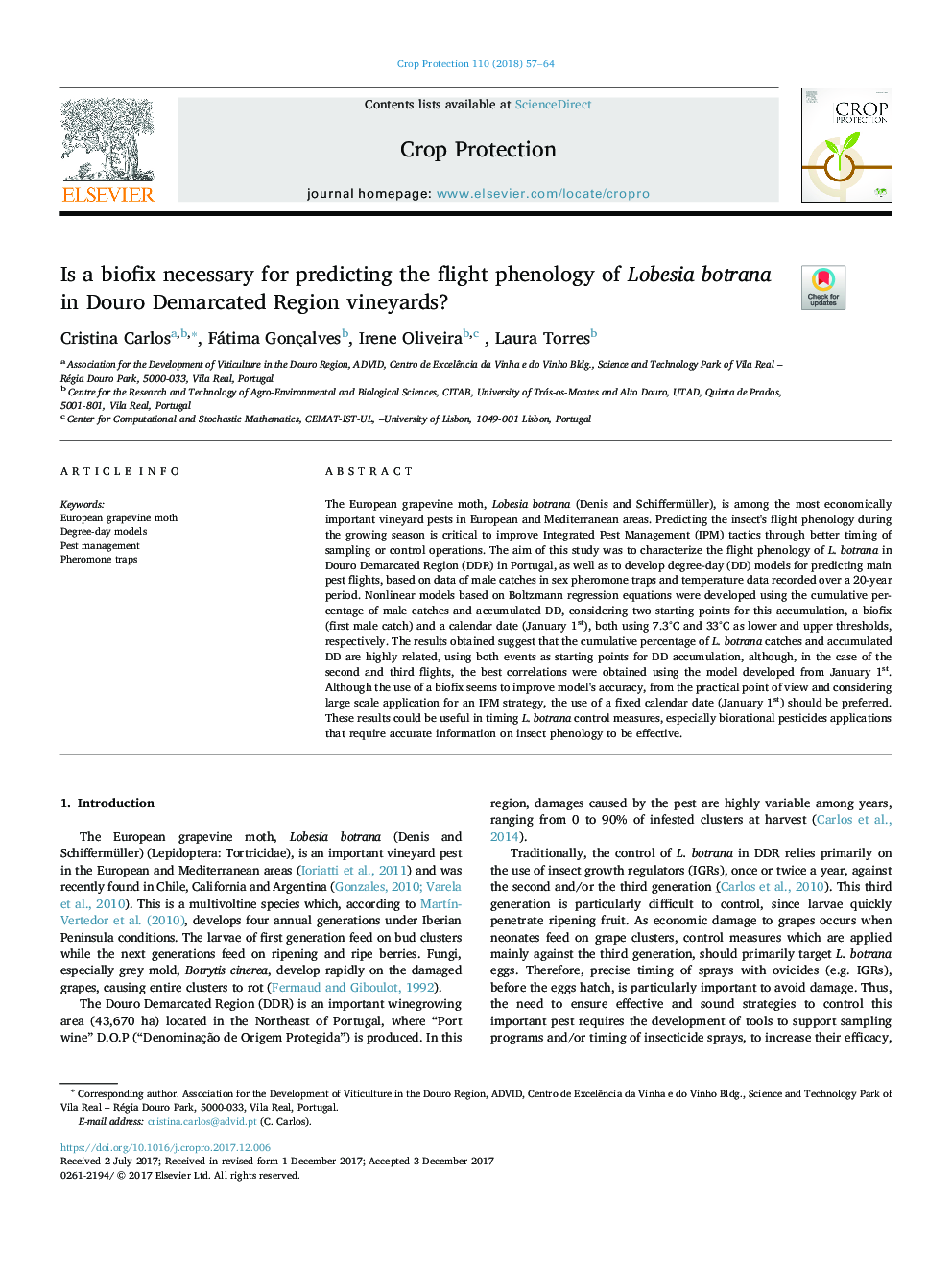| Article ID | Journal | Published Year | Pages | File Type |
|---|---|---|---|---|
| 8878027 | Crop Protection | 2018 | 8 Pages |
Abstract
The European grapevine moth, Lobesia botrana (Denis and Schiffermüller), is among the most economically important vineyard pests in European and Mediterranean areas. Predicting the insect's flight phenology during the growing season is critical to improve Integrated Pest Management (IPM) tactics through better timing of sampling or control operations. The aim of this study was to characterize the flight phenology of L. botrana in Douro Demarcated Region (DDR) in Portugal, as well as to develop degree-day (DD) models for predicting main pest flights, based on data of male catches in sex pheromone traps and temperature data recorded over a 20-year period. Nonlinear models based on Boltzmann regression equations were developed using the cumulative percentage of male catches and accumulated DD, considering two starting points for this accumulation, a biofix (first male catch) and a calendar date (January 1st), both using 7.3°C and 33°C as lower and upper thresholds, respectively. The results obtained suggest that the cumulative percentage of L. botrana catches and accumulated DD are highly related, using both events as starting points for DD accumulation, although, in the case of the second and third flights, the best correlations were obtained using the model developed from January 1st. Although the use of a biofix seems to improve model's accuracy, from the practical point of view and considering large scale application for an IPM strategy, the use of a fixed calendar date (January 1st) should be preferred. These results could be useful in timing L. botrana control measures, especially biorational pesticides applications that require accurate information on insect phenology to be effective.
Keywords
Related Topics
Life Sciences
Agricultural and Biological Sciences
Agronomy and Crop Science
Authors
Cristina Carlos, Fátima Gonçalves, Irene Oliveira, Laura Torres,
